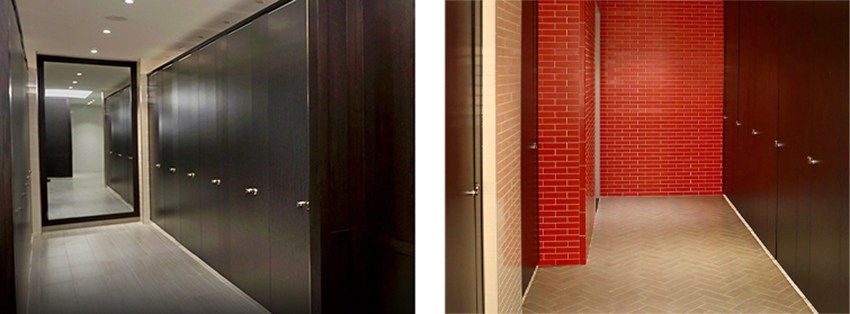Designing Interiors with a Full Palette of Choices
Note that a popular trend in today’s restrooms is a modern concrete aesthetic. Using this new, matte quartz option, especially in dark gray and beige colors, allows designers to mimic a contemporary, concrete-like aesthetic without actually having to use concrete, which is susceptible to stains, cracks, and reactions to cleaning chemicals.
One resilient type uses frameless construction made of phenolic material. These partitions are lighter than comparable partitions, yet equally durable. Another phenolic type creates the impression that the partitions are floating on air—even though they are securely anchored to the floor and walls—with the feet, headrail, and hardware hidden from view. In some cases, an innovative LED light occupancy indicator can be specified that turns from green to red to alert users. Most phenolic partitions are available in a range of standard colors as well as a selection of custom colors.
A third type of European-style partition is made of enameled tempered glass to bring both light, and lightness, to a restroom. Minimalist stainless-steel hardware is mounted on the inside of the stall, and the even surface of the partitions convey a smooth and streamlined look. Scratch-resistant, easily cleaned, strong, and safe, these enameled glass partitions achieve their soft opaque look from vitreous enamel paints that are available in an array of standard and custom colors.
Paying attention to the details of current product offerings for restrooms, such as those described here, will allow complete, coordinated, and successful restroom interiors to be created.
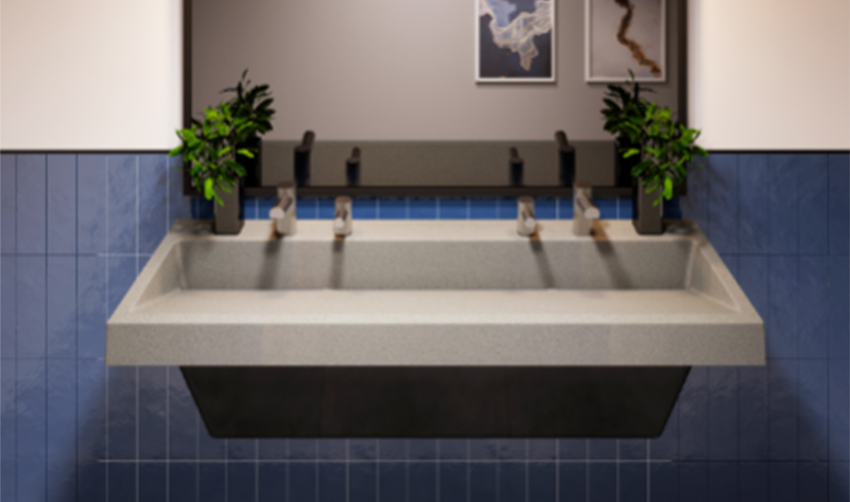
Photo courtesy of Bradley Corporation
Restroom washbasins can be made from a quartz-based material that looks like concrete. It is an easy-to-clean, durable, and attractive option for restroom applications.
COLOR SCHEMES IN DESIGN
The use of color is clearly an important and significant consideration for building interiors. Spending some time understanding not only color theory, but also the application of that theory, to create a color scheme that promotes the intended response from people is, therefore, a worthwhile endeavor for all projects.
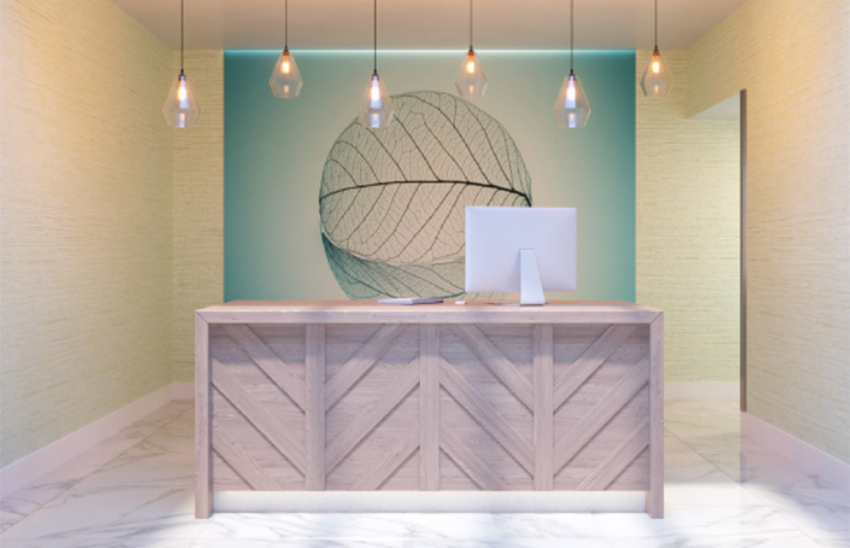
Photo courtesy of Inpro
Paying attention to the theoretical aspects of color meaning, combined with the practical aspects of incorporating materials and surfaces into an interior design, can achieve a total theme for a space. The materials used here were selected in a color scheme that focuses on wellness.
Manufacturers of interior products have taken the lead on assembling such coordinated color schemes around different themes that may be dictated by general things happening in our culture or society. There are many different themes that may be appropriate based on the level of activity, the use of the space, and the type of surfaces available to work with. Wellness, for example, is a common and popular theme for many people who use buildings, so it stands to reason that using a color scheme that has been organized around promoting wellness would be appropriate. An example of colors that could be used on walls and other interior surfaces with the meaning or significance of those colors explored might be as follows.
Blue/green: Seen as a clean and crisp color, it can stand for fresh air, calm surroundings, focus on listening, observing, and being.
Low chroma greenish blue: This color symbolizes transition and transformation. The deeper tone is grounding and relaxing. As with all blues, it brings visual comfort. It communicates high trust and low risk.
Rich yellow brown: This color feels leathery and luxurious. It points to the earth and the organic influence on our lives.
Neutral tan: This is a neutralizing and clean shade. It is calming and cleansing, yet reserved. It is hopeful, yet stoic, and plays well with many colors.
Altogether, the colors work cohesively to create a balanced and coordinated scheme to reinforce the intended theme.
DESIGNING WITH ALUMINUM TRIM
Aluminum trim can be used in conjunction with many different surface finishes, such as fabric or vinyl wall coverings, in addition to conventional painted drywall. Such trim pieces are available in a variety of traditional, contemporary, and modern looks to create subdued, elegant designs or emphatic three-dimensional appearances. Since aluminum is highly durable, recyclable, lightweight, and noncombustible, it is a popular and logical choice for interior trim. In addition, the design options, variability, and cost effectiveness of this trim make it very well suited for both public and private spaces in multifamily buildings.
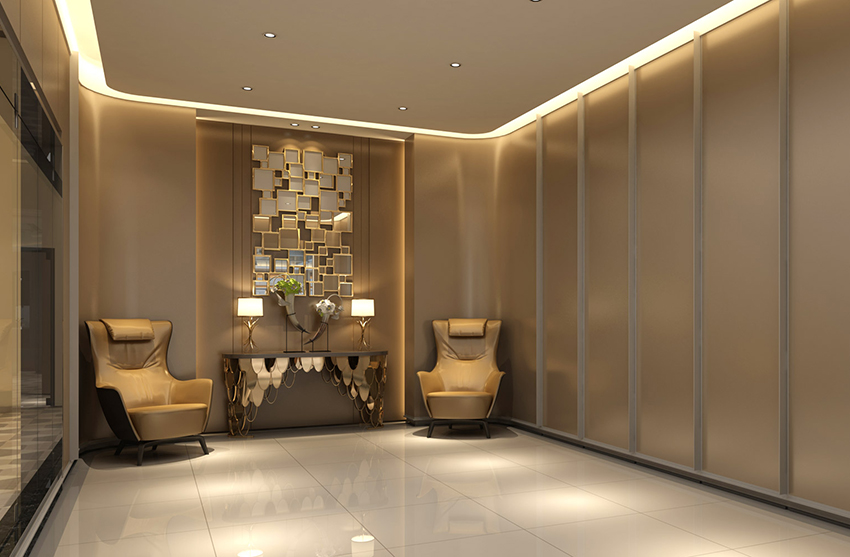
Photo courtesy of Tamlyn
Aluminum trim can be fabricated in custom shapes, profiles, and colors to suit the needs of a particular project.
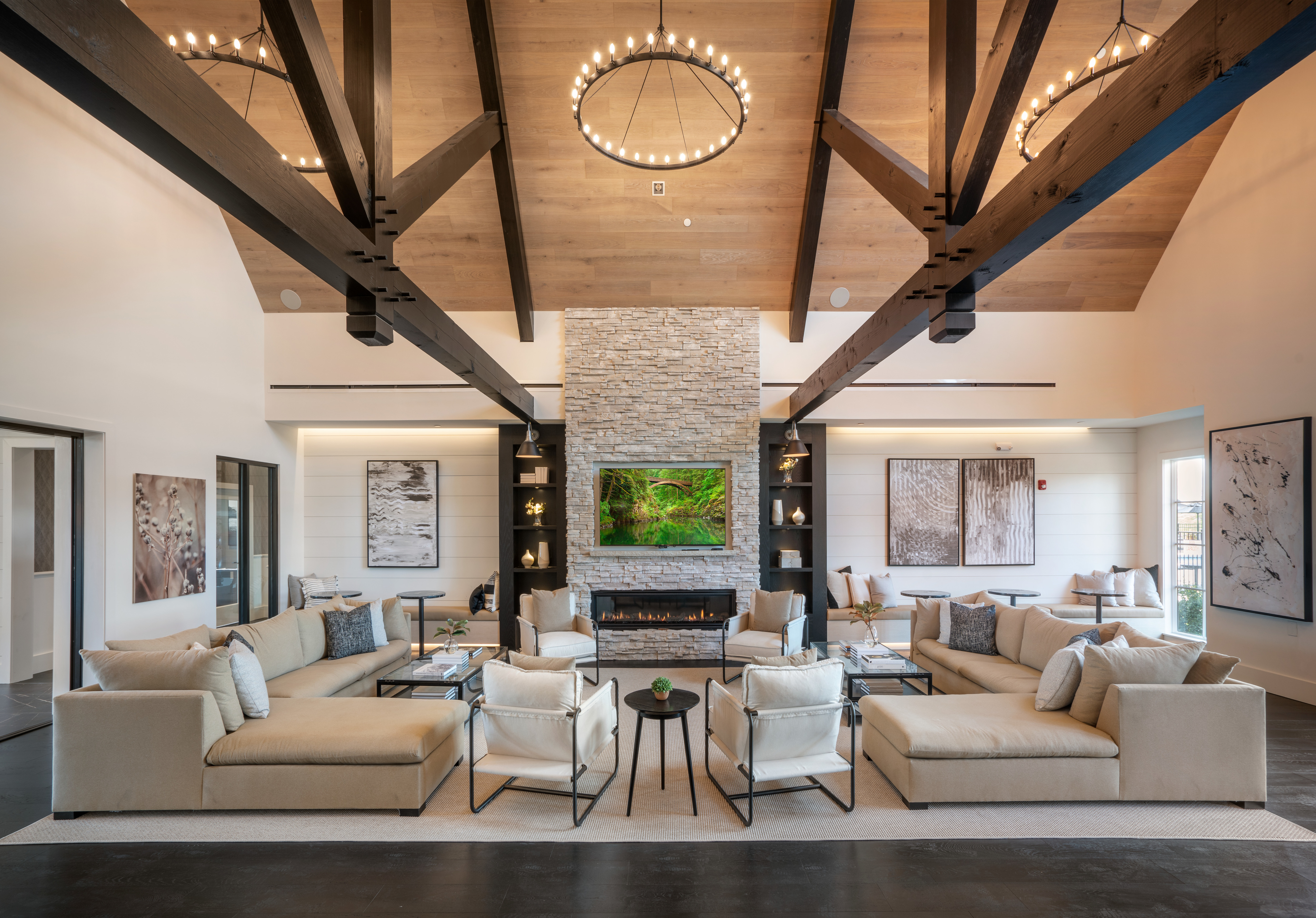
Photo courtesy of Cultured Stone
The attributes of manufactured stone veneer make it a great choice for entire walls or for feature areas such as the dramatic fireplace surround shown here.





